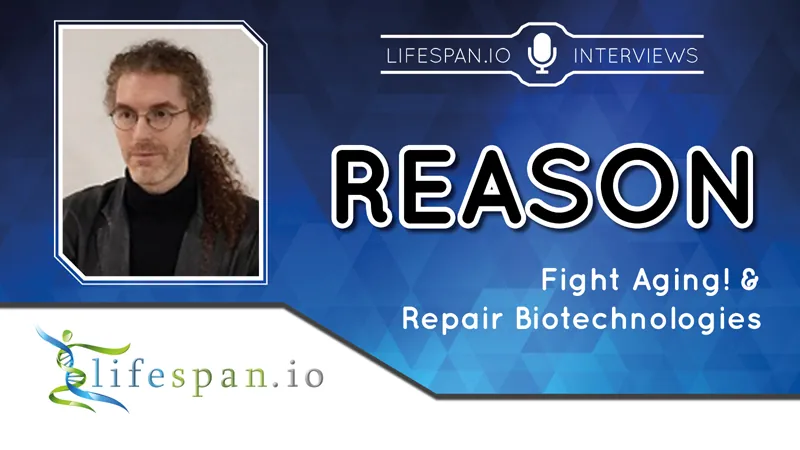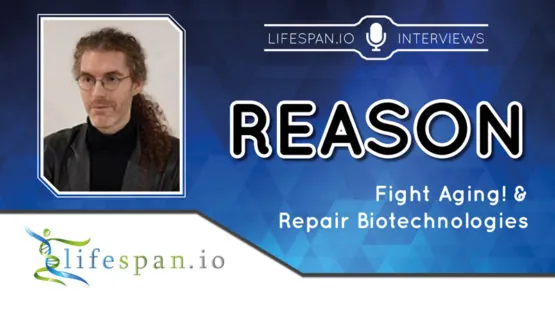Reason, author of the anti-aging blog Fight Aging and CEO of Repair Biotechnologies, still isn’t convinced that methylation is very useful in assessing biological age or the efficacy of various therapeutics, despite the wide use of methylation-based clocks.
He surprised me at this year’s Longevity Therapeutics conference in San Francisco by speaking out about the utility of the now widely used epigenetic/methylation clocks pioneered by Steve Horvath, Morgan Levine, and others. I attended the conference on behalf of the Lifespan Extension Advocacy Foundation (LEAF) for my second year in a row, and I enjoyed the sessions and the discussions.
I asked Reason a couple of questions about epigenetic clocks in that session and circled back with him later in this email conversation.
Why are many scientists so gung ho about using methylation clocks in aging studies if the scientific support is lacking? For example, in my recent interview with David Sinclair, I asked about the broader issue of whether epigenetic changes are a cause or consequence of aging, and he was clear in arguing that they are a cause.
Everyone is using methylation clocks because (a) producing that data is a part of trying to make them useful, and (b) it is really useful to convince investors, grant writers, etc who have an unsophisticated view of this.
Are we on the right track to make methylation clocks useful in aging studies, or are the required follow-up calibration studies just not being done yet?
I think the community is on the right track, more or less, but they aren’t being rigorous enough. It is too ad hoc, and this will be slower.
David Sinclair conducted the research showing that epigenetic change is downstream of double-strand breaks. If that bears out, it is only a cause in the looser sense of the word cause. Not a root cause. A point of intervention a few items removed from the cause.
Josh Mitteldorf has argued that it probably wasn’t HGH that led to thymus gland regrowth in the TRIIM trial and that the other four factors (metformin, Vitamin D, DHEA and zinc) were probably more impactful. Do you think that what he argues has any merit?
I don’t think Mittledorf’s argument holds water, given the other evidence for growth hormone to produce thymic regrowth in animal models, but it is testable.
What biomarkers do you consider useful at this time, if not methylation clocks? Please elaborate.
Which biomarkers of aging are useful at this time for rejuvenation therapies: probably some of them, but whether or not that is the case has yet to be proven. People will (and probably should) take the reasonable position that composite biomarkers of frailty are meaningful and that we should pay attention to approaches that can reverse them. But all of the others have yet to be shown to be good enough that one can test new approaches to rejuvenation against them and be prepared to stand by the results.
How do you explain the success of clocks like GrimAge at predicting timing of disease and time to death if methylation clocks aren’t measuring anything meaningful?
All these items, such as GrimAge, are measuring something related to aging. The reason why we can’t just then use them to test any new approach is that we don’t know whether or not these clocks (or other biomarkers) are measuring everything relating to age. Rejuvenation therapies will fix specific line items, reverse specific forms of damage. Since aging is a network of interacting forms of damage, it is perfectly possible to get good correlations with biomarkers that are only sensitive to the consequences of one or two forms of damage or are overly sensitive to one specific consequence. So you really don’t know whether what you observe in the biomarker results are in any way reflective of how useful any given potential rejuvenation therapy might be.
This is very true for the epigenetic clocks. It is a reasonable position to suggest that frailty rolls up pretty much everything in aging, and therefore we should expect results on frailty to be indicative of how useful a rejuvenation therapy is across the board – but that still may or may not be usefully true. It is only plausible.
Now, for specific age-related diseases, one can of course see whether or not something works. There are very clear goals and metrics. If you have a potential rejuvenation therapy, and it fixes arthritis (as is the hope for senolytics), then you put it through the FDA process for arthritis and let the longer battle of discovery relating to everything else in aging play out thereafter. Which is pretty much what everyone will do in the present generation of companies in the longevity industry.
Can you elaborate on the basis for your thymus rejuvenation approach and how it’s developing? What biomarkers will you use to test effects?
Our work on regrowth of the thymus is based on upregulation of FOXN1, a master regulator of thymic growth and function. Its expression declines with age, and that is the proximate reason as to why the thymus atrophies and the supply of T cells declines. So we build gene therapies to produce greater expression of FOXN1, which causes the thymus to increase its cellularity and start turning out more useful T cells. We’re presently past the proof of principle stage in mice and working on the formulation of the therapy. Simple biomarkers are fairly well established for anything to do with a faltering immune system; a great deal of work has taken place in connection with HIV in the past few decades, for example. One uses flow cytometry to count immune cells with various different surface markers indicating different populations: in our case, we want to see more naive T cells in the usual proportions, split between CD4+ and CD8+ types that are effective at tackling pathogens and errant cells. This is not so different from the HIV therapies in which researchers and clinicians are looking for CD4+ cell counts as a measure of how damaged the immune system has become and how much it might have recovered following treatment.



